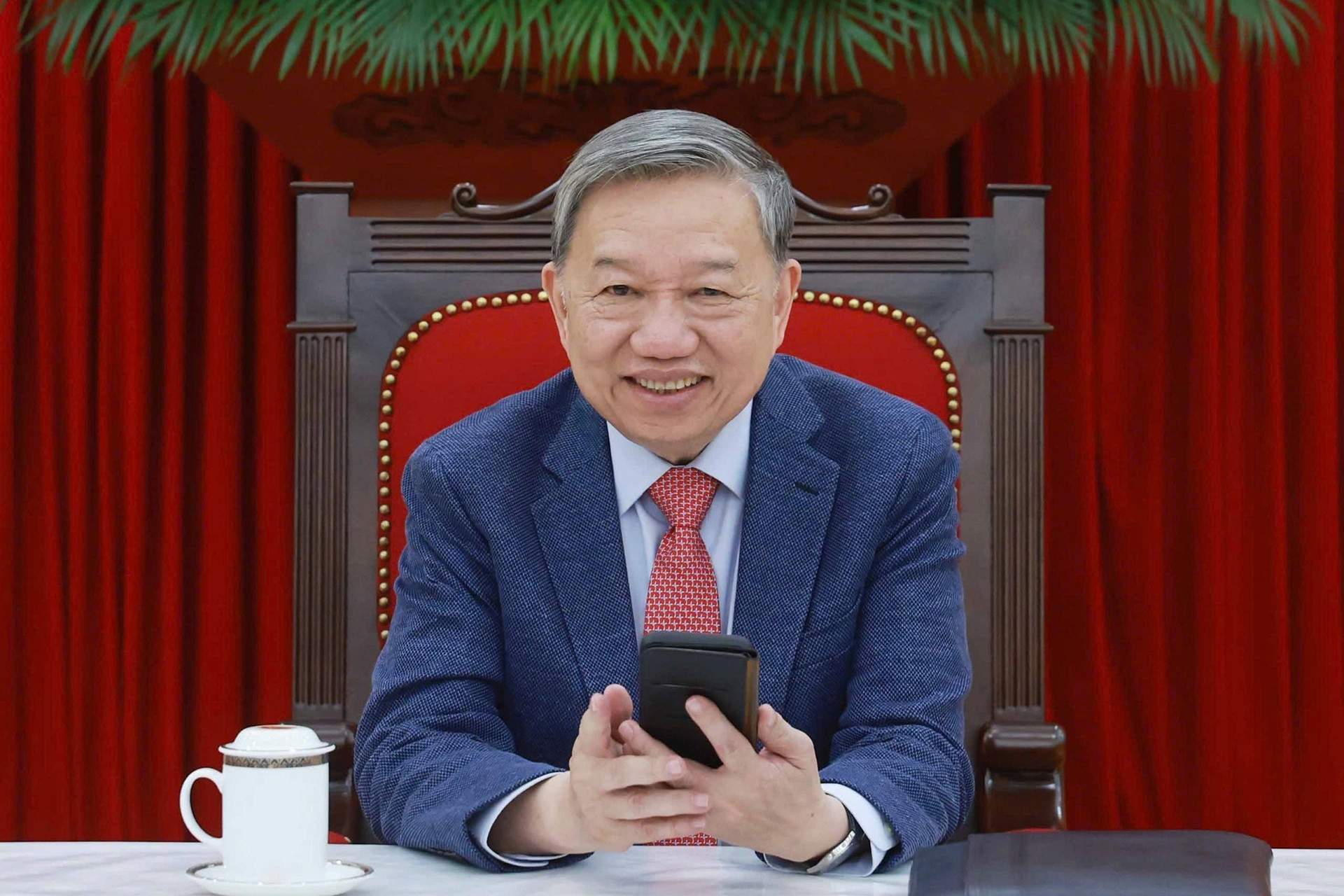The recent phone conversation between General Secretary To Lam and U.S. President Donald Trump marks a constructive beginning for future negotiations between the two countries.
A significant dialogue

“I just had a very productive call with General Secretary of the Communist Party of Vietnam, To Lam. He told me Vietnam wants to reduce tariffs to zero if a deal can be reached with the U.S. I thanked him on behalf of America and expressed my hope to meet in the near future,” President Donald Trump wrote on Truth Social last night.
According to the Vietnamese Government Portal, General Secretary To Lam affirmed that Vietnam is willing to discuss reducing import tariffs on U.S. goods to zero, and in turn, proposed that the U.S. apply similar tariffs for Vietnamese imports. He also expressed Vietnam's readiness to import more U.S. goods and encouraged greater U.S. investment in Vietnam.
Both leaders confirmed their intention to work toward signing a bilateral agreement to formalize these commitments.
On this occasion, General Secretary To Lam extended a warm invitation to President Donald Trump and his spouse to visit Vietnam again. President Trump gladly accepted and expressed his eagerness to reunite with To Lam, asking him to convey his heartfelt greetings to Vietnam’s leaders and people.
Phrases like “very productive” and “zero tariffs” suggest that both leaders have found common ground in pursuit of mutual benefit. President Trump’s tone toward Vietnam is notably more positive compared to his previous comments about other trading partners.
The news has helped ease market tensions following the U.S. announcement of a 46% import tax on Vietnamese goods, part of a broader tariff hike affecting around 60 countries.
According to CNBC, following news of the phone call, Nike shares surged over 5%. Nike sources approximately 25% of its footwear from Vietnam. Its stock had plunged on April 3 after the new tariffs were announced.
Other “Made in Vietnam” brands also saw gains: On Holding AG and Skechers USA Inc. rose over 6%, Lululemon Athletica was up 3.9%, and Wayfair Inc., which had experienced a temporary trading halt due to volatility, rebounded by 6.4% after a 19% drop.
Tariffs: Just one piece of the puzzle
Some questioned President Trump’s mention of a 90% tariff applied by Vietnam on U.S. goods. However, the 2025 National Trade Estimate Report on Foreign Trade Barriers, published by the U.S. Trade Representative, states that Vietnam’s average MFN tariff rate was 9.4% in 2023 - consistent with Vietnam’s own reporting.
Nonetheless, the U.S. raised several concerns about Vietnam’s tariff practices:
In 2023, Vietnam’s average MFN tariff was 17.1% for agricultural products and 8.1% for non-agricultural goods.
Vietnam has committed to binding all tariff lines at the WTO, with an average bound rate of 11.7%.
Certain products, such as salt, eggs, and sugar, are subject to import tariff quotas.
While most U.S. exports to Vietnam face tariffs of 15% or less, some food and agricultural goods still face higher rates.
In 2016, Vietnam passed Law No. 106/2016/QH13, which revised the basis for calculating special consumption tax on imported alcoholic beverages - from import value to retail price - substantially increasing the tax burden for foreign producers.
The recent phone call and the commitment to a future bilateral agreement may represent the next step after the U.S.-Vietnam Trade and Investment Framework Agreement (TIFA) signed in June 2007. This followed the U.S.-Vietnam Bilateral Trade Agreement that took effect on December 10, 2001.
Concerns about potential violations of the WTO’s MFN (Most Favored Nation) principle in granting preferential tariffs to the U.S. may no longer be as relevant, as many countries and blocs are currently negotiating directly with Washington outside of WTO structures.
Bigger issues beyond tariffs
While tariffs remain a critical issue, the U.S. trade deficit with Vietnam - USD 123 billion - is the core challenge. Addressing this imbalance will require broader structural adjustments.
First, the U.S. has invested only USD 12 billion in FDI in Vietnam, despite over two decades since the BTA was signed. Vietnam might consider relaxing market access in key sectors where U.S. investors have strengths, such as aviation, entertainment, publishing, logistics, ports and airports, telecom, offshore wind, and real estate - industries listed under Decree No. 31/2021/ND-CP.
Second, public procurement and state investment offer quick pathways to rebalance trade. Since Vietnam controls this funding directly, it has more flexibility compared to areas governed by international commitments.
Third, in response to U.S. concerns over currency manipulation, Vietnam may consider appreciating the VND through tools like interest rate hikes or forex interventions.
Still, the ultimate question remains: Will the 46% tariff rate hold? And if not, what rate would be bearable and competitive for Vietnam compared to other nations?
Despite the uncertainties, the phone call between General Secretary To Lam and President Donald Trump signals a favorable starting point for negotiations.
Tu Giang